- It is the mission of St. Clair County Community College to provide quality learning opportunities.
School Highlights
St Clair County Community College serves 4,029 students (32% of students are full-time).
The college's student:teacher ratio of 17:1 is lower than the state community college average of 19:1.
Minority enrollment is 17% of the student body (majority Hispanic and Black), which is less than the state average of 40%.
Quick Stats (2025)
- Enrollment: 4,029 students
- In-state tuition: $6,429
- Out-state tuition: $9,188
- Student:teacher ratio: 17:1
- Minority enrollment: 17%
- Source: Integrated Postsecondary Education Data System (IPEDS)
School Overview
The teacher population of 239 teachers has stayed relatively flat over five years.
St Clair County Community College
(MI) Community College Avg.
Carnegie Classification
Associate's Colleges: High Transfer-Mixed Traditional/Nontraditional
Baccalaureate/Associate's Colleges: Associate's Dominant
Institution Level
At least 2 but less than 4 years
At least 2 but less than 4 years
Institution Control
Public
Public
Total Faculty
239 staff
224 staff
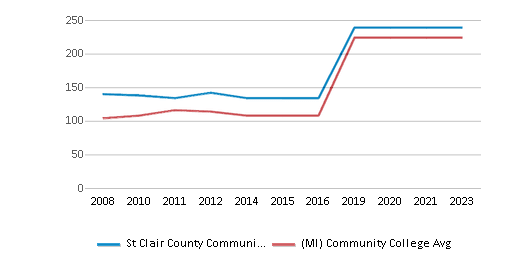
School Calendar
Student Body
The student population of St Clair County Community College has grown by 11% over five years.
The student:teacher ratio of 17:1 has increased from 14:1 over five years.
The St Clair County Community College diversity score of 0.31 is less than the state average of 0.60. The school's diversity has declined by 14% over five years.
Total Enrollment
4,029 students
2,154 students
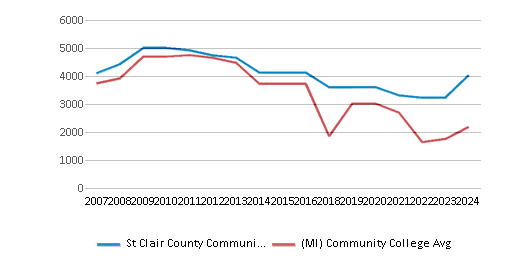
Student : Teacher Ratio
17:1
19:1
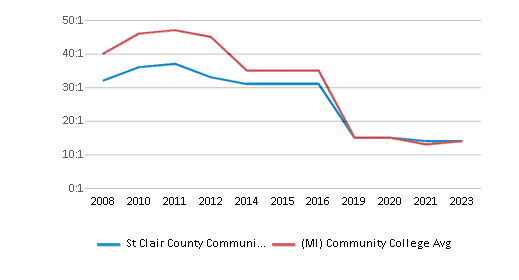
# Full-Time Students
1,309 students
878 students
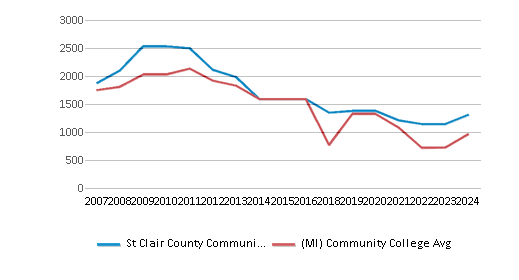
# Part-Time Students
2,720 students
1,714 students
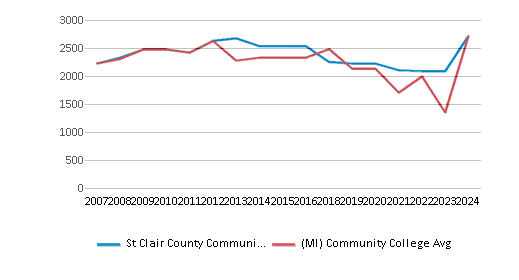
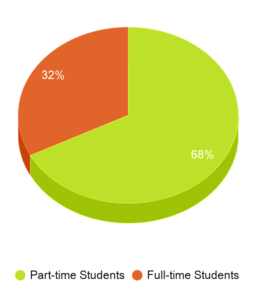
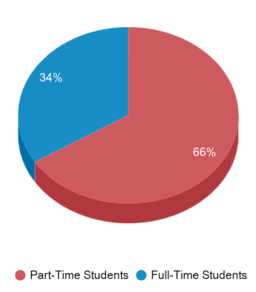
# Enrollment Undergraduate
402 students
225 students
# Full-Time Undergraduate Students
1,309 students
889 students
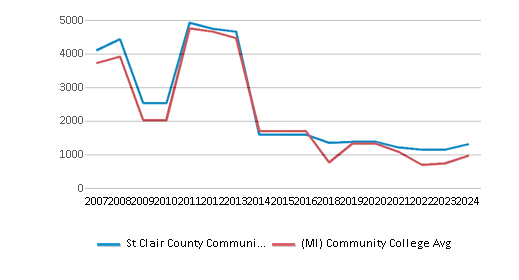
# Full-Time Graduate Students
n/a
4 students
# Part-Time Undergraduate Students
2,720 students
1,714 students
# Part-Time Graduate Students
n/a
4 students
Total Dormitory Capacity
70 students
178 students
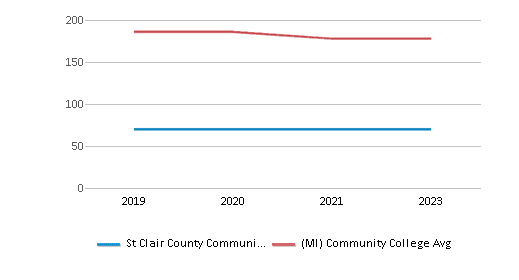
% American Indian/Alaskan
2%
n/a
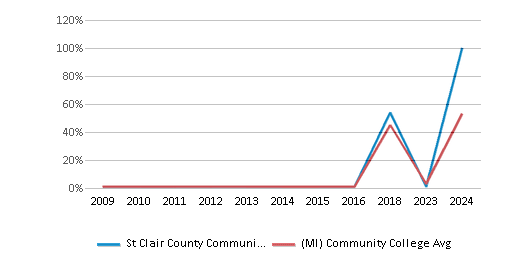
% Asian
1%
4%
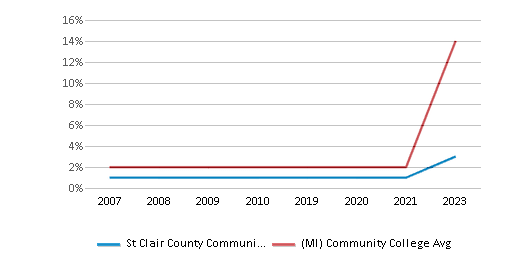
% Hispanic
5%
7%
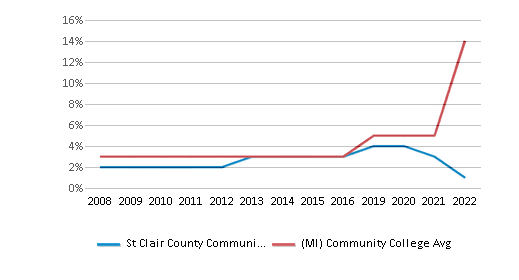
% Black
4%
16%
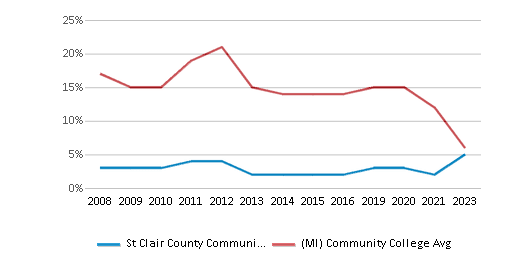
% White
83%
60%
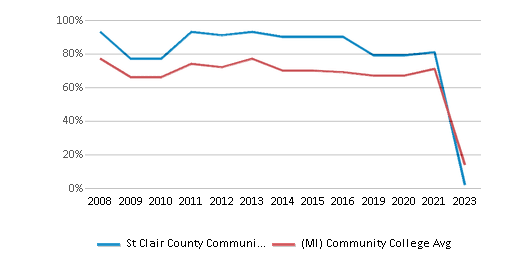
% Hawaiian
n/a
1%
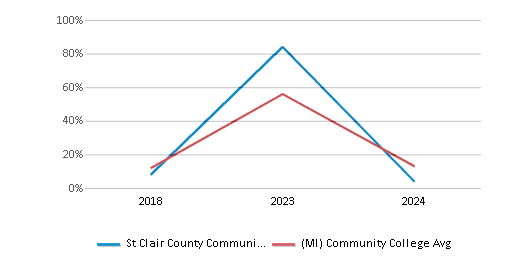
% Two or more races
1%
4%
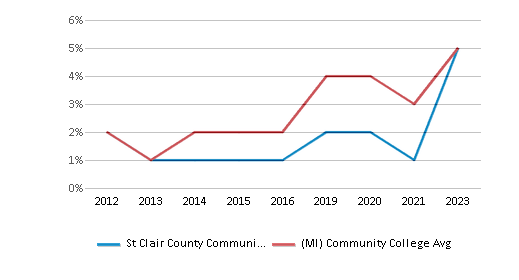
% Non Resident races
n/a
2%
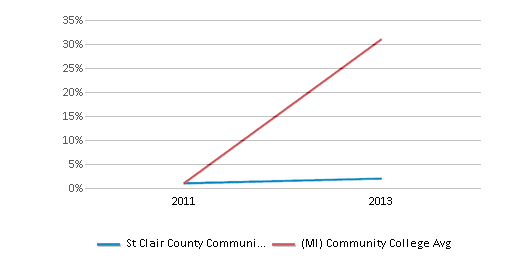
% Unknown races
4%
6%
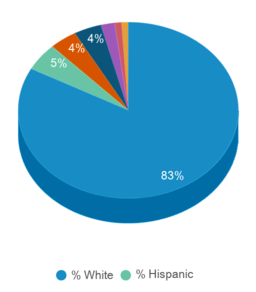

Diversity Score
0.31
0.60
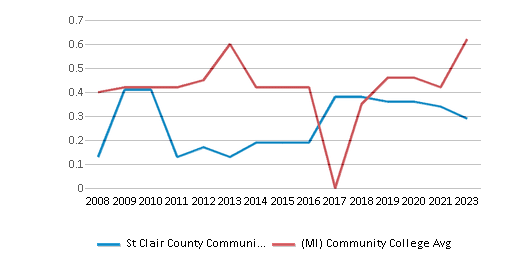
College Completion Rate (Students who graduate in less than 4 years)
0.2463%
0.2881%
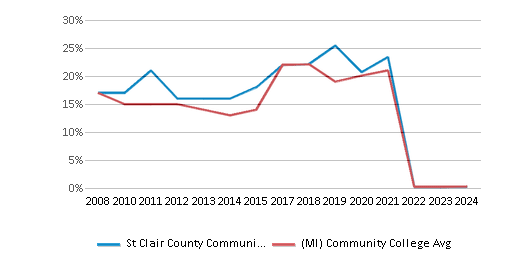
College Completion Rate (Students who graduate in 4 years or more than 4 years)
n/a
0.2071%
Average Graduate Earnings (10 Years)
$33,400
$30,700
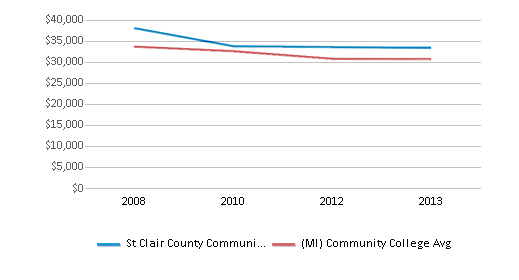
Tuition and Acceptance Rate
The public in-state tuition of $6,429 is more than the state average of $4,952. The in-state tuition has declined by 27% over four years.
The public out-state tuition of $9,188 is more than the state average of $6,896. The out-state tuition has declined by 25% over four years.
In-State Tuition Fees
$6,429
$4,952
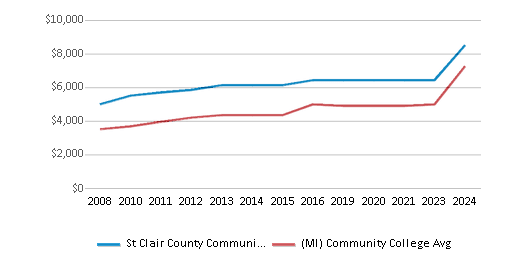
Out-State Tuition Fees
$9,188
$6,896
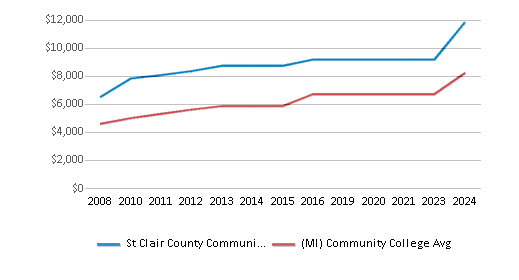
% Students Receiving Some Financial Aid
70%
89%
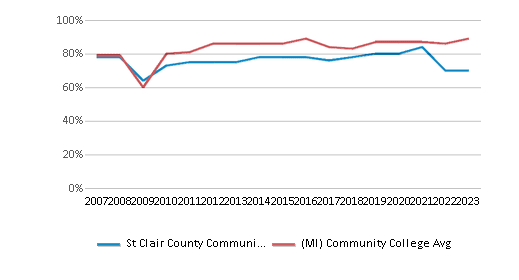
Median Debt for Graduates
$11,704
$11,704

Median Debt for Dropouts
$5,472
$5,500
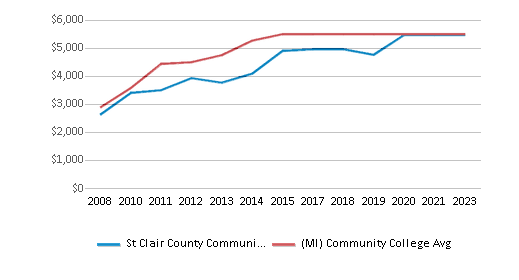
Acceptance Rate
n/a
98%
Source: 2024 (or latest year available) Integrated Postsecondary Education Data System (IPEDS)
School Notes
- St. Clair County Community College began as Port Huron Junior College, which was the Junior College Department of the Port Huron School District. The college was established by act of the Board of Education of the Port Huron School District under Michigan State Law in 1923 and began operation in the same year. It has continued without interruption since that time. The college became St. Clair County Community College in 1967. St. Clair County Community College serves as the primary center of higher education for the Blue Water Area. We work to fulfill the diverse needs of our educational communities by providing a broad range of educational, cultural and social learning opportunities. We offer a comprehensive future-focused curriculum and prepare students for the changing global economy. St. Clair County Community College campuses are located at Port Huron, Algonac, Anchor Bay, Bad Axe, Imlay City, Peck and Yale. Port Huron, Michigan scenic 25 acre campus provides a park like setting along the banks of the Black River. It is a full service college facility. Thumb Area Centers take college credit opportunities to students throughout the Thumb. SC4 classes are also taught at Algonac High School, Anchor Bay, Bad Axe Nursing Education Center, Huron Area Technical Center, Imlay City Middle School, Sanilac Career Center and Yale Junior High School. Degrees and Programs offered at Port Huron includes Certificate Programs, Associate, Online Associate Degree, Transfer Programs, Bachelor's Programs, Master's Programs and Doctoral Programs. We collaborated with eight universities to expand bachelor's and master's degree options through our University Center. The college is accredited by the Higher Learning Commission and is a member of North Central Association.
Frequently Asked Questions
How much does St Clair County Community College cost?
St Clair County Community College's tuition is approximately $6,429 for In-State students and $9,188 for Out-State students.
Recent Articles

Obtaining Your Bachelor's Degree at a Community College
Explore the evolving landscape of community colleges offering bachelor's degrees, addressing affordability, accessibility, and workforce needs.

A to Z of Community College Certificates and Courses
From business and healthcare to technology and skilled trades, the article showcases the breadth of options available to students seeking to enhance their knowledge, develop new skills, or pursue career advancement.

What is a Community College?
This comprehensive guide explains what a community college is, its history, and its role in higher education. It covers the types of programs offered, differences from four-year colleges, benefits of attending, and important considerations for prospective students, providing valuable insights for those exploring educational options.









